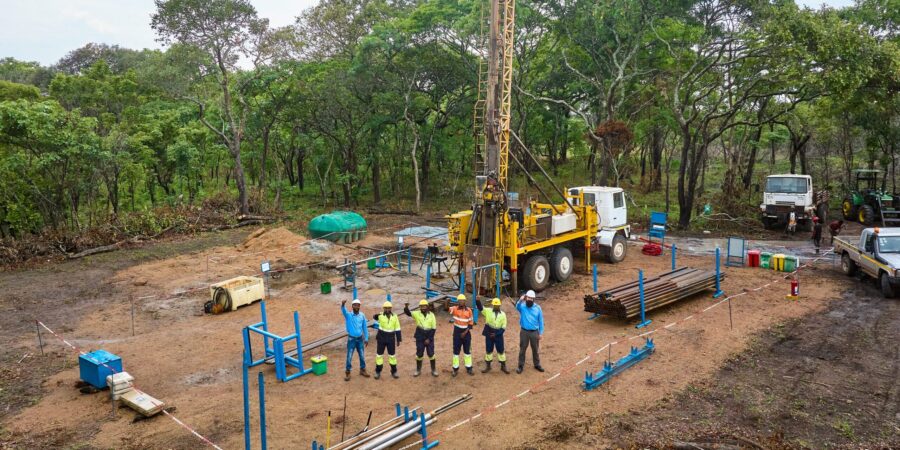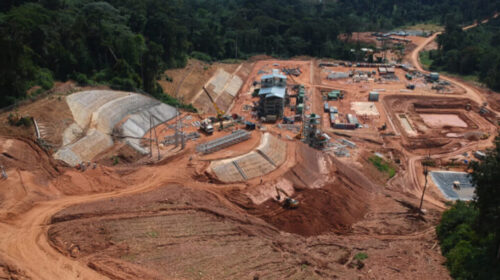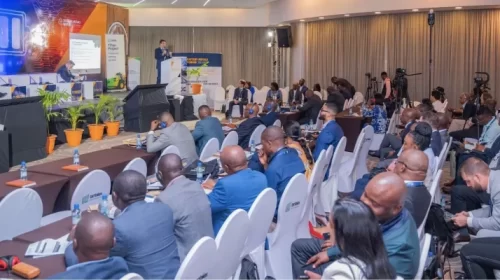Ivanhoe Mines to Quadruple 2024 Exploration Budget
Ivanhoe Mines Founder and Executive Co-Chair Robert Friedland and President Marna Cloete announced that the company is substantially increasing its group exploration activities and budget for 2024. The group budget for 2024 will quadruple to approximately $90 million, with exploration activities primarily focused on the 2,654-square-kilometre Western Foreland Exploration Project. The budget increase follows the November 28, 2023 announcement of the geologically significant, high-grade Kitoko copper discovery, as well as the maiden Mineral Resource estimates for the Makoko and Kiala high-grade copper discoveries, as announced on November 13, 2023, in the Western Forelands.
The Kitoko discovery confirms the presence of a globally significant high-grade copper mineralizing system. Kitoko’s copper mineralization is hosted in near flat-lying siltstone of the lower Grand Conglomerate, similar to the geologic setting observed at the Kamoa, Kakula, Makoko and Kiala high-grade, sedimentary copper discoveries. All of these discoveries, including Kitoko, in the Western Foreland share the same characteristics of mineralization being bottom-loaded with the highest copper grades occurring at the base of each sedimentary, copper-mineralized horizon.
However, what differentiates the Kitoko discovery from the previous Kakula, Kamoa, Makoko and Kiala discoveries, is that the Kitoko discovery exhibits two remarkably different characteristics. Firstly, the mineralization is hosted within the Grand Conglomerate, directly overlying the Kibaran Basement rocks (see Figure 1) with no underlying Mwashia sandstones. This is significant as Ivanhoe Mines’ geology team previously conceived that the sandstones are the primary sedimentary aquifer allowing the circulation of oxidized copper-bearing basinal fluids, which precipitated copper when they were brought into contact with overlaying pyrite-rich reduced sediments. The remarkable Kitoko discovery proves the potential for copper mineralization to occur across a greater variety of underlying aquifer conditions rather than being limited to areas where the Mwashia sandstones are present. Secondly, mineralization at Kitoko occurs across at least two distinct, high-grade, sedimentary horizons. This emphasizes the strength of the mineralizing system, as sufficient copper remains in the fluid following the interaction with the lower reductant, to be able to subsequently mineralize a second horizon.
As a result, the Ivanhoe Mines’ exploration model has been disrupted by the Kitoko discovery, significantly increasing the proportion of the Western Foreland that is prospective for world-class, high-grade, sedimentary copper systems.
Ivanhoe Mines’ Board of Directors has just approved a quadrupled groupwide exploration budget to $90 million for 2024. The increased budget will focus on activities around the Kitoko discovery, as well as testing additional new targets developed in light of the Company’s new geological understanding.
The recent exploration success further reinforces the vital role of the Democratic Republic of the Congo as the future of the world’s copper supply. As announced on November 13, 2023, the Makoko discovery ranks as the world’s third-largest and highest-grade copper discovery since Kakula in 2016.
Ivanhoe is in discussions with multiple potential strategic investors, including major international corporations and sovereign wealth funds, regarding matters including, but not limited to, fast-tracking the development of the Western Foreland.
Ivanhoe Mines’ Founder and Executive Co-Chairman, Robert Friedland commented:
“Given the ongoing exploration success across the Western Foreland, highlighted by the recently announced high-grade Kitoko copper discovery and the release of the Makoko and Kiala maiden Mineral Resource estimates, we are really accelerating our exploration drilling into 2024.
“The goals of this expanded exploration effort will be threefold. Firstly, we will continue to expand the Kitoko copper discovery with additional drill rigs, thereby increasing our knowledge of its substantial exploration opportunities. Kitoko highlights the potential for high-grade copper mineralization across a much greater area, and within a wider variety of geological conditions, than previously conceived by our geologic team who have decades of experience in the Democratic Republic of the Congo and Zambia. Second, we will advance our understanding of the Makoko and Kiala deposits and optimize our studies for near-term copper mine production on our majority-owned licences. Finally, we will continue to evaluate high-priority targets across the Forelands, based on our fast-evolving proprietary database and geologic models for additional tier-one, high-grade copper discoveries.”
Watch a timeline video by clicking here, dated October 2023, chronicling Ivanhoe Mines’ exploration success in the DRC. An updated version, including Ivanhoe’s more recent developments, will be released in the new year.
Selected drill holes at the Kitoko Copper Discovery include:
- DD003 (the Kitoko discovery hole) intersected 3.37 metres (true width) of 3.54% copper, at a 1.0% copper cut-off, from a downhole depth of 1,077 metres.
- DD004 intersected 6.43 metres (true width) of 4.92% copper, at a 1.0% copper cut-off, from a downhole depth of 1,071 metres.
- DD006 intersected 4.18 metres (true width) of 3.60% copper, at a 1.0% copper cut-off, from a downhole depth of 1,065 metres.
- DD007 intersected 6.79 metres (true width) of 3.35% copper at a 1.0% copper cut-off, from a downhole depth of 1,089 metres.
- DD008 intersected two separate high-grade mineralized zones: 3.09 metres (true width) of 3.67% copper from a downhole depth of 1,118 metres, and a higher grade zone of 5.19 metres (true width) of 11.64% copper from a downhole depth of 1,135 metres, at a 1.0% copper cut-off.
For more information on the drill results listed above, including assays and locations, see announcement dated November 28, 2023
Ivanhoe’s evolving experience of the Western Foreland geology has disrupted the regional scale prospectivity for world-class, high-grade, sedimentary copper discoveries
Ivanhoe began exploration activities on its extensive Western Foreland land position in July 2017. Initially, activities were focused on the construction of approximately 120 kilometres of all-season access roads, bridges and the development of new camp facilities. In parallel, Ivanhoe undertook airborne and ground-based geophysical surveys and revisited previously acquired geophysical and geochemical data sets. Targets, and subsequent discoveries, were initially identified based on analysis of geological models from the airborne and ground geophysics, as well as surface and sub-surface geochemical sampling, and ultimately discovered by diamond drilling. By year-end 2023, the company expects to have completed more than 160,000 metres of Western Foreland diamond drilling since 2017, including almost 40,000 metres completed year-to-date. Total drilling completed on the Western Foreland, including across the Kamoa-Kakula Copper Complex, is approximately one million metres (approximately 650 miles) since project inception.
Kitoko’s fine-grained copper mineralization is hosted in near flat-lying siltstone of the lower Grand Conglomerate, like that observed at the tier-one Kamoa and Kakula deposits.
The newly discovered high-grade mineralization at Kitoko is associated with siltstone and inter-banded gritty layers of sandstone, formed in periods of relatively low sediment input into the basin, within a large package of Grand Conglomerate diamictite. The siltstones contain early pyrite that reacted with basinal fluids to deposit sedimentary copper systems. Multiple packages, or layers, of pyritic siltstones, have been identified and are exploration targets when they occur in prospective basin locations.
The Kitoko discovery is approximately 20 to 30 kilometres due west of the ultra-high-grade Kakula Mine, and approximately five kilometres south and southeast of the Makoko copper discovery. Kitoko was discovered inside a package of newly acquired joint venture licences and remains open for expansion into the adjoining licences held by Ivanhoe Mines. The new package of licences increases Ivanhoe’s highly prospective Western Foreland land position by 10% to 2,654 square kilometres. Ivanhoe is currently earning up to 60% of the licence package containing the initial Kitoko discovery area and the company holds additional rights with respect to this licence package.
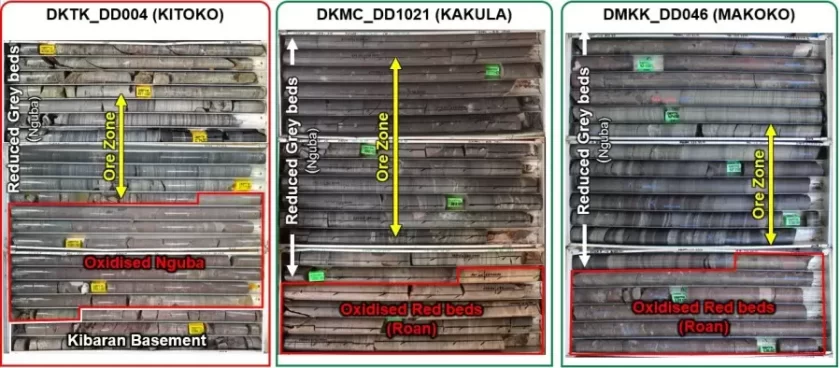
Figure 1. The Kitoko discovery is hosted within the Grand Conglomerate, overlaying the Kibaran basement directly, which differs from the high-grade copper mineralization at the Kakula, Kamoa, Makoko and Kiala deposits that occurs where the Grand Conglomerate is dominantly underlain by Mwashia sandstones.
In contrast to the Kamoa and Kakula copper discoveries, the copper mineralization at Kitoko is hosted in the lowest reductant sedimentary layer to have been discovered in the Western Forelands. The deposition of copper mineralization occurs where the circulating copper-bearing fluids are focused into sub-basins and shelf edges. Ivanhoe’s 80-to-100%-owned exploration licences, plus the new joint venture licence package, cover approximately 175 kilometres of prospective strike length for this world-champion district of high-grade sedimentary copper mineralization.

(L-R) Samples of typical Kamoa, Kakula and Kitoko copper discovery core
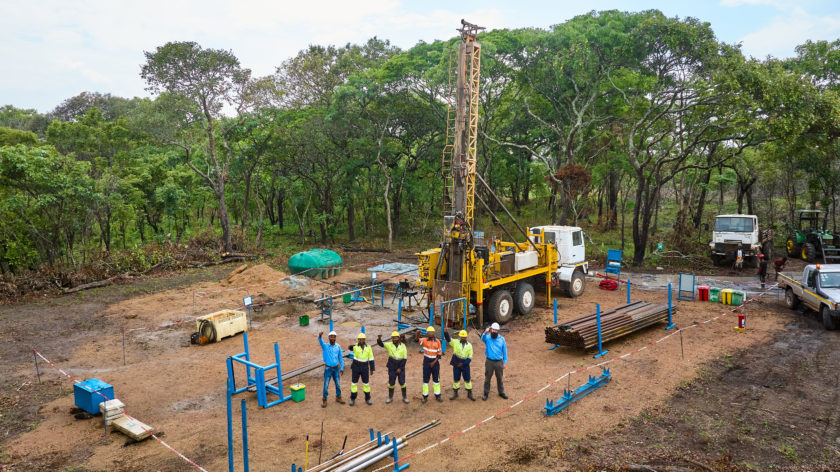
Ivanhoe Mines’ exploration team with a diamond drill rig in the Western Foreland
About Ivanhoe Mines
Ivanhoe Mines is a Canadian mining company focused on advancing its three principal projects in Southern Africa; the expansion of the Kamoa-Kakula Copper Complex in the DRC, the construction of the tier-one Platreef palladium-nickel-platinum-rhodium-copper-gold project in South Africa; and the restart of the historic ultra-high-grade Kipushi zinc-copper-germanium-silver mine, also in the DRC.
Ivanhoe Mines also is exploring for new copper discoveries across its circa 2,400km2 of 80-100% owned exploration licences, as well as on the 247km2 of newly acquired joint venture licences, in the Western Foreland located adjacent to the Kamoa-Kakula Copper Complex in the DRC.
105 total views , 1 views today


